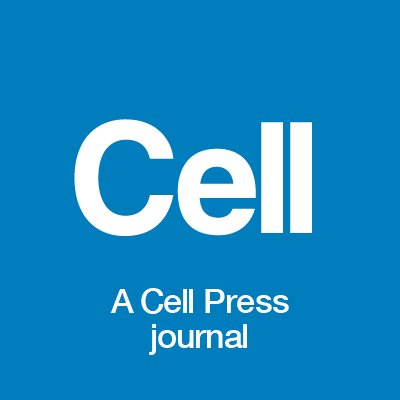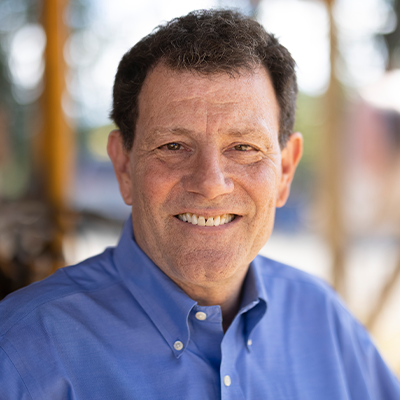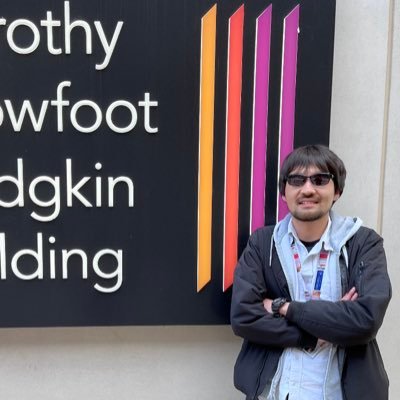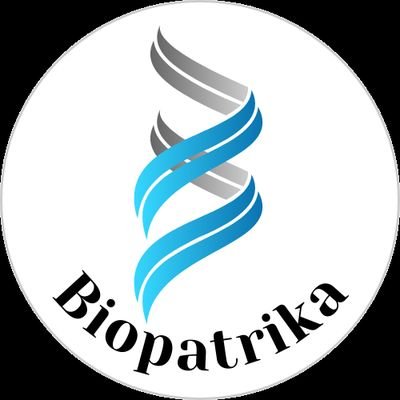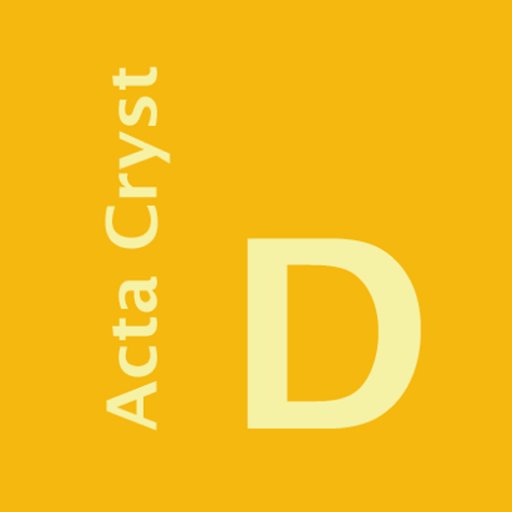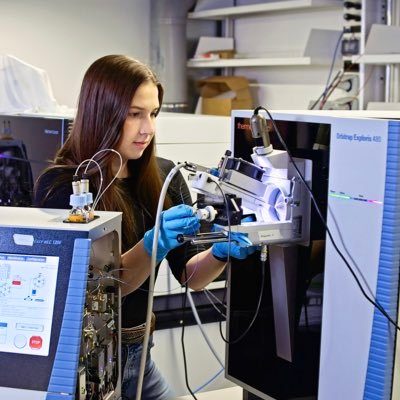
Basavraj khanppnavar
@BasurajSK
Followers
230
Following
2K
Media
19
Statuses
642
Scientist at Paul Scherrer Institut. Interested in #Cellular signalling and homeostasis #Host-Pathogen interacations #Enzyme Biotechnology
Switzerland
Joined April 2012
Feels great to be part of this #TrendsTalk and also to contribute a excellent review highlighting new structural insights membrane #adenylyl cyclases (initiators of #cAMP signaling). https://t.co/hiMT4qbvWD
cell.com
Membrane adenylyl cyclases (ACs) catalyze the conversion of ATP to the ubiquitous second messenger cAMP. As effector proteins of G protein-coupled receptors and other signaling pathways, ACs receive...
In a TrendsTalk from last week's @TrendsBiochem special issue on #StructuralBiology, four structural biologists discuss pertinent challenges and opportunities in the field. Read the TrendsTalk: https://t.co/wvWMaQVkzJ
@BasurajSK, @rachel_a_north, @PPMC_UAB, and Yanhui Xu
2
0
14
Structural snapshots capture nucleotide release at the μ-opioid receptor | Nature
nature.com
Nature - Structures of GDP-bound MOR–Gi conformational states combined with pharmacological assays show an inverse correlation between ligand efficacy and GDP affinity, where agonists...
0
5
7
Our 5th paper on dengue virus protease NS2B/NS3 just out in PNAS Nexus (OUP)! It sheds light on the enzyme’s complex mechanism — a step closer to better antivirals. 🔗
academic.oup.com
Abstract. Several enzymes receive functional signals from allosteric site to the active site through conformational dynamics while domain dynamics can also
1
2
4
Delighted to share our latest study on atypical activation and dimerization of an intrinsically-biased chemokine receptor, CXCR7! Atypical activation and molecular glue-like dimerization mechanism of an intrinsically-biased chemokine receptor
biorxiv.org
CXCR7, also known as atypical chemokine receptor 3 (ACKR3), is a naturally-biased, β-arrestin-coupled seven transmembrane receptor (7TMR) that lacks productive coupling with heterotrimeric G-protei...
7
13
73
Learn how our hunt for the native structure of top #antimalarial target PfATP4🧂led to the discovery of PfABP, an unknown essential binding partner, out now! @natcomms 👉 https://t.co/SX5vBW1ZzT 🦠🔬❄️ A team effort by @mehsehret @cmholab & Anurag Shukla @AkhilVaidya1 #cryoEM
1
27
95
Role of the Active Site Heme and Tyrosine in Styrene Oxide Isomerase’s Natural Isomerase and Unnatural Peroxidase and Peroxygenase Activity | ACS Catalysis
pubs.acs.org
Heme enzymes can perform a wide range of reactions in biological systems, often controlled by the heme surrounding amino acids or in conjunction with redox partners. Recently, we resolved the cryo-EM...
1
2
9
In the latest issue! Brain endothelial gap junction coupling enables rapid vasodilation propagation during neurovascular coupling
cell.com
Vasodilatory signals are rapidly communicated across long distances by endothelial-endothelial gap junctions, enabling coordinated dilation of the arterial network during neurovascular coupling.
0
21
72
Once rare, Parkinson's disease is now the fastest growing neurodegenerative disease, with a new case diagnosed every 6 minutes in the US. Why? I argue that it's lax regulation of toxic chemicals, from pesticides to those used in dry cleaning. Read:
nytimes.com
There is a growing mountain of imperfect but troubling evidence that pesticides and other chemicals may be behind the exploding rates of the disease.
21
86
310
Our article on the allosteric modulation of SV2A is now online at PNAS:
1
1
4
Structure-guided engineering of snake toxins for selective modulation of adrenergic and muscarinic receptors https://t.co/WnBhHEKRVr
nature.com
Nature Communications - Adrenergic and muscarinic receptors are key GPCRs involved in vital functions. Here, the authors engineer toxin variants that selectively target α2A and M4AChR,...
0
3
16
The elusive mechanism by which ATP is translocated into the ER in exchange for ADP has been revealed by a fantastic paper by my colleagues in the David Drew lab! Congratulations to all who contributed in this amazing well rounded study! https://t.co/pJCSirmo40
nature.com
Nature - SLC35B1, initially thought to be a nucleotide sugar transporter, is an essential ATP/ADP exchanger that imports ATP into the endoplasmic reticulum through a unique stepwise translocation...
0
1
3
I am delighted to share our findings on the binding mode of tetanus neurotoxin and the anti-epileptic drug Levetiracetam to SV2A, an essential synaptic vesicle membrane protein of unknown function, now online in @NatComms https://t.co/PaTTAxT4Jn
nature.com
Nature Communications - SV2A, an essential membrane protein in neurotransmission, is known as the receptor of clostridial neurotoxins and target of anti-epileptic drugs. Here the authors show...
6
3
15
Happy to share our recent work in @NAR_Open
https://t.co/7apsNu9n52. We unravel the mechanism of deamination of Mycobacterium enzyme that selects for mutagenic bases, protecting Mtb from triazines. Kudos to @Chakrabarti_Lab and @TheRALab1 for their collaborative efforts.
20
8
168
Check out our new study revealing how ATP-independent activator Bpa binds asymmetrically to the Mtb #proteasome — and pinpointing key Bpa residues involved in substrate interaction. 👏 Tatjana v. Rosen @Rafal_Zdanowicz @yasserelhadeg 🔗 https://t.co/Pi5A5YhlX7
nature.com
Nature Communications - Mycobacterium tuberculosis has a proteasome similar to eukaryotes. This study reveals how the activator Bpa recruits its substrate HspR, providing structural and mechanistic...
1
12
60
Our investigation of lipid dependence of Cx32 gap junction channel conformations is now online on @biorxivpreprint. Great work by @PLavriha, @FluriCarina and Jorge Hernández González! https://t.co/qY1wddLPcs
1
12
31
Many thanks @biopatrika for this opportunity and sharing our findings on #Botox.
#Authorinterview: Basavraj Khanppnavar a structural biologist and biochemist talks about his work on "Molecular Snapshots Unravel Botox’s Secrets of Nerve Cell Entry". #botox #cryoEM #neuron @BasurajSK @KorkhovLab
@ETH_en
https://t.co/nmV8iEc0kx via @biopatrika
0
1
7
Happy to share our latest publication on @NatureSMB Natural Structure & Molecular Biology, we show tau filaments show Alzheimer fold in mutants V337M and R406W. https://t.co/yffK99Li7A
https://t.co/EFTrDO14YA thanks @SjorsScheres and @MichelGoed support 🥳🥳🥳
1
2
24
Male blue-lined octopuses inject females with venom during mating to avoid being eaten by their partners https://t.co/RbUH3HcMlV
nature.com
Nature - The paralysing toxin deployed by the male blue-lined octopus might help to protect him from being eaten.
9
51
207
Molecular-dynamics simulations of seven selected ligands of the ACDC domain of Plasmidium ApiAP2 provide a new molecular basis for the future design of ACDC inhibitors https://t.co/g0GS5BwLfz
2
7
43
Very excited to announce that I have moved across the pond to start my new position as Assistant Director for Chemoproteomics @ the Nucleus @Stanford_ChEMH. This position allows me to do what I love: fun science, collaborations & teaching everyone about the wonders of #masspec 🥳
4
3
92
Fantastic work by our collaborators and colleagues who decipher the role of apicoplast in Toxoplasma gondii.
🚨New paper out! 🚨 The apicoplast is an essential plastid retaining many crucial metabolic pathways 🦠🏭 However, bypassing all of them makes the apicoplast dispensable! https://t.co/ELkGjzaE2Q
0
0
0











